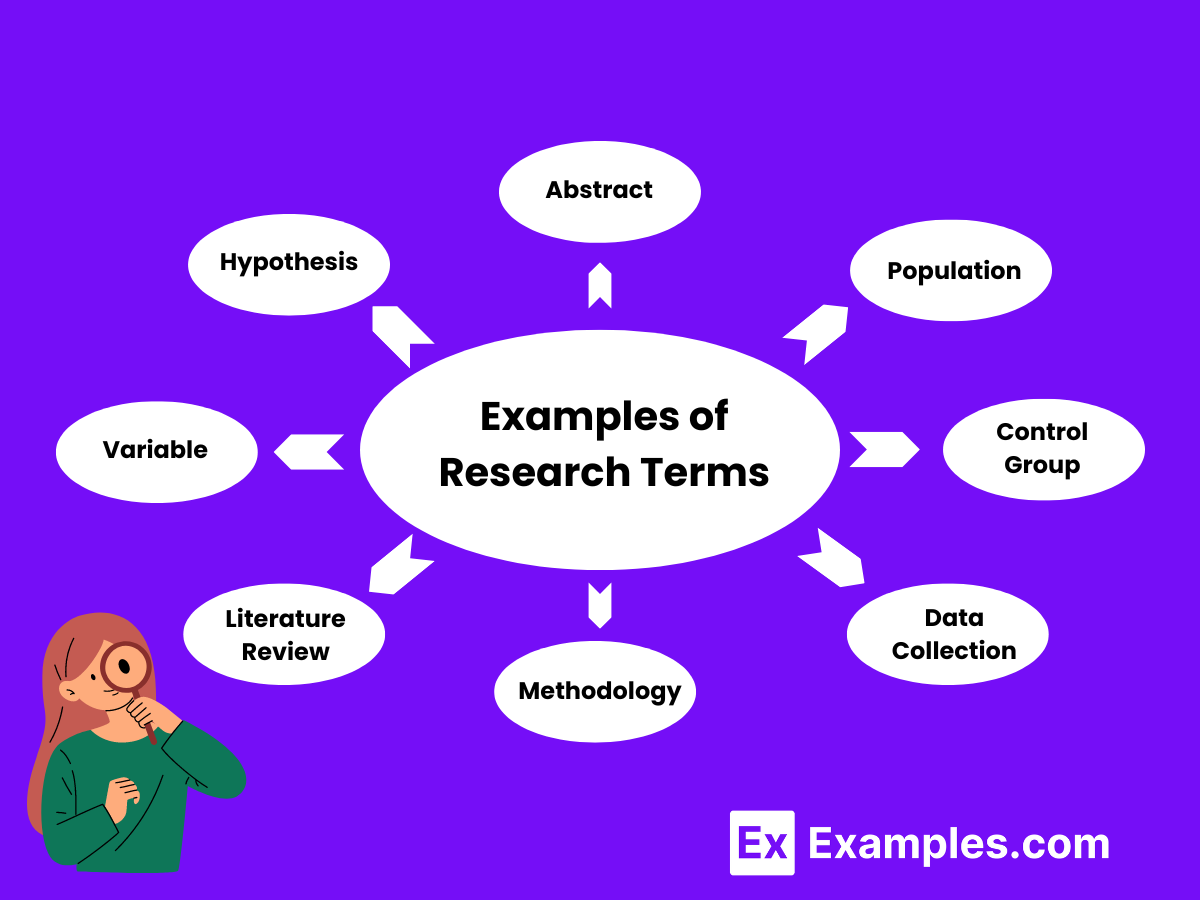Training videos | Faqs


Technical Terms, Notations, and Scientific Jargon in Research Papers
In this blog, we will teach you how to use specialized terminology in your research papers with some practical examples. Using scientific jargon and technical vocabulary has two advantages, number one, you are using the language used by your peers in your field, and number two, it makes your text significantly shorter.
1. Scientific Jargon
Make sure you use scientific jargon that is relevant to your field in your text. Scientific jargon refers to technical terms specific to your discipline. Here is an example. In the example below, the same statement has been written in both everyday language and using scientific jargon. “The X-ray of the breast” in the first statement has been replaced by “Mammography” in the second statement. “A needle to extract breast tissue” in the first statement has been replaced by “Biopsy” in the second statement, and “Dangerous cancer” in the first statement has been replaced by “malignant tumor” in the second statement.
✖ Sentence written in everyday language The X-ray of the breast is used to find cancers. Then, a needle is inserted to extract breast tissue to find out if it is a dangerous cancer. ✔ Sentence written using specialized terminologies Mammography is used to detect cancers. Then, a Biopsy is performed to confirm if it is a malignant tumor.
2. Abbreviations and Acronyms
Try to use acronyms and abbreviations for long method names. Abbreviations and acronyms are a great way to make your writing concise and save time. Define the acronyms and abbreviations during their first occurrence then use the short form in the rest of the text. The common practice is to put the acronym and abbreviations in parentheses after the full term.
Look at the example below. We have defined the abbreviation for Digital breast tomosynthesis as “DBT” at the first occurrence and then started using the abbreviated form in the rest of the text.
Author defines ‘DBT’ at the first occurance, and uses the abbreviated form in the rest of the text Digital Breast Tomosynthesis (DBT) has been recently introduced to overcome some of the limitations of traditional mammography. DBT has been adopted in many countries for routine screening of breast cancer.
3. Notations and Technical Definitions
The introduction paragraph is the best place to introduce notations and technical definitions. This can include symbols, characters, and terminologies. Notations and definitions can help you to express very large names and numbers in a form that is easy to understand to your readers. Following are some examples.
✔ Examples of notations introduced in the introduction paragraph of a research paper [1] We introduce some notations which applies throughout the rest of the paper. Let ‘X’ be a collection of points and ‘Y’ be a …. [2] Throughout the paper we will signify variable names with upper-case letters. [3] We first introduce some notation. Let ‘i’ denote ….
If you have any questions, please drop a comment below, and we will answer as soon as possible. We also recommend you to refer to our other blogs on academic writing tools , academic writing resources , academic writing phrases and research paper examples which are relevant to the topic discussed in this blog.
Similar Posts

How to Make Your Study Limitations Sound Positive?
In this blog, we will look at some clever techniques to present the study limitations without reducing the impact of your work.

How to Create a Research Paper Outline?
In this blog we will see how to create a research paper outline and start writing your research paper.

Abstract Section Examples and Writing Tips
In this blog, we will go through many abstract examples and understand how to construct a good abstract for your research paper.

Writing a Questionnaire Survey Research Paper – Example & Format
In this blog, we will explain how to write a survey questionnaire paper and discuss all the important points to consider while writing the research paper.

Improve Academic Writing Skills Using REF-N-WRITE Scientific Writing Software Tool
In this blog, we explain why academic writing is a difficult skill to master, and how students can use Ref-n-write to get better at it.

Formulating Strong Research Questions: Examples and Writing Tips
In this blog, we will go through many research question examples and understand how to construct a strong research question for your paper.
Leave a Reply Cancel reply
Your email address will not be published. Required fields are marked *
Save my name, email, and website in this browser for the next time I comment.
- 10 Share Facebook
- 0 Share Twitter
- 0 Share LinkedIn
- 0 Share Email

Research Terms
Ai generator.

Research terms are specific words or phrases used in academic writing to describe the research process, methodologies, and findings. These include concepts like hypothesis , variables, sample size, literature review, and data analysis. Understanding these terms is crucial for interpreting research studies and effectively communicating ideas. Mastery of research terms enhances clarity in academic discourse, whether in a research project proposal , a qualitative research report , or the description of research methodology.
What are terms in research?
Terms in research refer to the specific words, phrases, and concepts used within a study to define its scope, methodology , and focus. These terms ensure clarity and precision, allowing researchers to communicate ideas and findings effectively. Clear definitions facilitate a shared understanding and maintain the integrity and replicability of research.
Examples of Research Terms

- Hypothesis : A proposed explanation for a phenomenon, to be tested through research.
- Variable : Any factor or element that can be changed and measured in research.
- Literature Review : A comprehensive survey of existing research and publications on a specific topic.
- Methodology : The systematic plan and approach used to conduct research.
- Data Collection : The process of gathering information for analysis in research.
- Sample : A subset of a population selected for observation and analysis.
- Control Group : A group in an experiment that does not receive the treatment, used for comparison.
- Validity : The extent to which a research study measures what it intends to measure.
- Reliability : The consistency of a research study or measuring test.
- Abstract : A brief summary of a research study’s aims, methods, results, and conclusions.
- Population : The entire group of individuals or instances about whom the research is concerned.
- Ethics : Moral principles that govern a researcher’s conduct and the conduct of the research.
- Bias : A systematic error introduced into sampling or testing by selecting or encouraging one outcome over others.
- Pilot Study : A small-scale preliminary study conducted to evaluate feasibility, time, cost, risk, and adverse events.
- Peer Review : A process by which a research study is evaluated by experts in the same field before publication.
- Quantitative Research : Research that relies on numerical data and statistical methods.
- Qualitative Research : Research that relies on non-numerical data, such as interviews, observations, and textual analysis.
- Case Study : An in-depth study of a particular case, individual, group, or event.
- Longitudinal Study : Research that follows subjects over a long period to observe changes and developments.
- Cross-sectional Study : Research that analyzes data from a population at a specific point in time.
- Independent Variable : The variable that is manipulated to observe its effect on the dependent variable.
- Dependent Variable : The variable being tested and measured in an experiment.
- Confounding Variable : An outside influence that affects the dependent and independent variables, causing a spurious association.
- Operational Definition : A clear, precise, and measurable definition of a variable for the purposes of a study.
- Statistical Significance : The likelihood that a result or relationship is caused by something other than mere chance.
- Random Sample : A sample that fairly represents a population because each member has an equal chance of inclusion.
- Correlation : A measure of the relationship between two variables.
- Experimental Group : The group in an experiment that receives the treatment.
- Theoretical Framework : A structure that guides research by providing a clear perspective and basis for the study.
- Meta-analysis : A statistical technique that combines the results of multiple studies to determine overall trends.
Research Terms List
5 common research terminologies.
- Hypothesis : A testable prediction about the relationship between two or more variables.
- Variable : An element, feature, or factor that can be changed and measured in research.
Confusing Terms in Research
- Reliability : The consistency of a research study or measuring test over time.
- Independent Variable : The variable that is manipulated to observe its effect.
- Dependent Variable : The variable being tested and measured, which is affected by the independent variable.
- Random Assignment : Assigning participants to experimental and control groups by chance to minimize pre-existing differences.
- Descriptive Research : Research that aims to describe characteristics of a population or phenomenon.
- Explanatory Research : Research that seeks to explain the reasons behind a phenomenon or relationship.
Key Research Terms
1. abstract.
- A brief summary of the research paper, outlining the main points, purpose, methods, results, and conclusions.

2. Hypothesis
- A testable statement or prediction about the relationship between two or more variables.
3. Variable
- An element, feature, or factor that can be changed and measured in research. Includes independent, dependent, and control variables.
4. Literature Review
- A comprehensive survey of existing research and publications relevant to the research topic.
5. Methodology
- The systematic plan for conducting research, including the methods, techniques, and procedures used to collect and analyze data.
6. Qualitative Research
- Research that focuses on understanding phenomena through non-numerical data such as interviews, observations, and texts.
7. Quantitative Research
- Research that focuses on quantifying data and analyzing it statistically to draw conclusions.
8. Sampling
- The process of selecting a subset of individuals from a population to represent the whole group in research.
9. Data Collection
- The process of gathering information from various sources to answer research questions.
10. Data Analysis
- The process of examining, cleaning, transforming, and modeling data to discover useful information, draw conclusions, and support decision-making.
Terms Synonymous to Research
Faq’s, what is a variable in research.
A variable is any characteristic, number, or quantity that can be measured or quantified in research.
What is the difference between qualitative and quantitative research?
Qualitative research explores concepts and experiences in-depth, while quantitative research involves measuring and analyzing numerical data.
What is a literature review?
A literature review summarizes existing research on a topic, identifying trends, gaps, and key findings.
What is a sample in research?
A sample is a subset of a population selected for study to represent the entire group.
What is a hypothesis?
A hypothesis is a testable prediction or educated guess about the relationship between two or more variables in a study.
What is data collection?
Data collection involves gathering information from various sources to address a research question or hypothesis.
What is an independent variable?
An independent variable is the variable that is manipulated or changed in an experiment to observe its effect.
What is a dependent variable?
A dependent variable is the variable being tested and measured in an experiment, affected by the independent variable.
What is a control group?
A control group is a group in an experiment that does not receive the treatment, used for comparison against the experimental group.
What is a research methodology?
Research methodology is the systematic plan for conducting research, including methods for data collection and analysis.
Text prompt
- Instructive
- Professional
10 Examples of Public speaking
20 Examples of Gas lighting

IMAGES
VIDEO